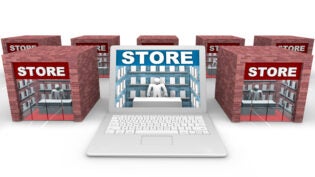Between Apple’s recent announcement of its Apple Pay service and the looming October 2015 deadline for merchants to support chip-and-PIN credit cards, there is something of an upheaval tearing through the payment processing industry.
While common cash still works, your customers might ask to pay with PayPal, Venmo, Google Wallet, or Bitcoin, or they may try to pay just by waving their NFC-equipped smartphones. Today, the payment space is overflowing with innovation, which raises several questions: What payment methods should you, as a small business owner, support? What hardware and services are worth your investment now? And what does the future hold?
Don’t let the swell of new payment methods scare you. If you can significantly reduce the friction between your customers and their purchases, you’ll hold the potential to boost sales. And if you can lower your own costs associated with processing their payments, it will greatly improve your profit margin.
While there are new payment options popping up every day, let’s see which methods are worth supporting now.
Today’s Most Popular Payment Methods
● Chip-and-PIN Credit Cards
You might have noticed some credit card companies rolling out chip-and-PIN cards in the U.S., but you’re about to be flooded by them. These cards, which are mainstream in Europe, are embedded with a small integrated circuit chip, which communicates with a specially equipped card reader installed according to a standard called EMV. Customers enter a four-digit PIN to verify their identities instead of a signature. It’s a much more secure system, and it’s greatly reduced fraud in the countries that have implemented it.
As part of an international banking agreement, most credit card companies will roll out chip-and-PIN cards by October 2015. Older magnetic strip cards will still be supported for a while, but the liability for fraudulent purchases will shift. So if you don’t support chip-and-PIN payments, you could be held liable for fraudulent purchases.
● Chips in Smartphones and Other Devices
Smartphones, key fobs, smart cards (common in mass transit systems), and other devices are increasingly equipped with special chips to communicate wirelessly with your register and authenticate payments.
The iPhone 6 and Apple Pay are not the first NFC payment systems, which various Android-based phones first touted, but Apple has brought greater attention to this technology. NFC is an evolution of radio frequency identification technology. A special NFC chip in a mobile phone or other device establishes two-way communication with an NFC-enabled reader at your store, which then handles the payment.
● Mobile Web Payments
The technology behind mobile web payments is old-school, relatively speaking. Rather than a special chip or other device, the customer’s smartphone communicates via a web page or web-based app to complete the payment, using a credit card or online payment service such as PayPal.
Digital wallets such as Google Wallet work the same way. Customers don’t need a special chip in their phones, and you don’t need a specific reader, either. Communication happens over the Internet. It’s not the easiest way for your customers to pay, but there’s no special hardware required.
● Bitcoin and Other Virtual Currencies
Bitcoin, a “virtual currency,” has stirred a lot of media attention in the past year. Some third-party payment processors, such as Square, will help you process this currency and handle all the complexities of the transaction.
● Industry-Specific Payment Systems
A number of industry-specific services have started offering payment processing systems within their industries. OpenTable, for example, allows diners to pay their restaurant bills through its mobile app. Movie-going users of the Fandango app can purchase virtual tickets at participating theaters. You save resources — time and money — by outsourcing the work of taking customers’ payments through an app ahead of time.
Today’s Payment Systems You Should Support Now
With the overwhelming number of options out there, deciding which systems your company should support can be tricky — and we haven’t even discussed QR code payments, biometrics, SMS payments, or a host of other payment schemes. But many of these systems are either flawed or too immature to invest in today. Here are the systems you should support right now.
● Brick-and-Mortar-Only Merchants
For legal reasons, you’ll need to support chip-and-PIN credit cards by October 2015. And if you have tech-savvy clientele, consider accepting chip-in-smartphone payments, such as the NFC chips in the iPhone 6 and many Android phones. Either talk to your current merchant account service provider to get the right hardware, or take this as an opportunity to switch to a new provider altogether.
If your business is primarily conducted in person, Square is the best option, with ShopKeep coming in a close second.
The purpose of Square is to simplify payments. It’s best known for outfitting iPads and iPhones with its iconic square card readers, but it constantly introduces new ways to accept payments through mobile and even email. Square has a chip-and-PIN card reader on the way, is rolling out Apple Pay support, and can accept Bitcoin for you. Square supports your e-commerce store, though it’s not the service I most recommend for online-only merchants.
ShopKeep is less flashy than Square, but it supports more legacy payment hardware. If you’re not yet ready to dive headfirst into the mobile payment age, ShopKeep may be a gentler way to ease in.
● Online-Only and Integrated In-Person/Online Merchants
If your business includes or is solely e-commerce, I can’t recommend Shopify highly enough. In a crowded field, this company has nailed the e-commerce platform, making it simple to use. You can accept payment via credit cards, PayPal, Bitcoin, and more. Shopify also offers an excellent point-of-sale payment system that syncs effortlessly with your online store. The integration between the two is really impressive. If e-commerce is part of the equation for you, then it’s Shopify all the way.
● Industry-Specific Merchants
If you’re running a restaurant, take a look at the OpenTable payment system. It will make paying the bill easier for your customers and provide a better experience. And by turning tables over quicker, you’ll have an opportunity to earn more revenue.
If you run a movie theater, you probably already know about Fandango. In other industries, keep your eyes open for specific, well-supported payment systems you could integrate with to make taking payments seamless.
We’re in an exciting time of innovation for payment processing that will likely help your business grow — eventually. But don’t let the bleeding-edge payment ideas cloud your judgment. Be patient, vet each option carefully, and aim to provide the most seamless payment experience possible for your customers.
Rameet Chawla is the founder of Fueled, an app design and development company based in New York City and London and the founder of the Fueled Collective, a co-working space composed of more than 35 startups in downtown Manhattan.
Additional Resources
4377 Views












